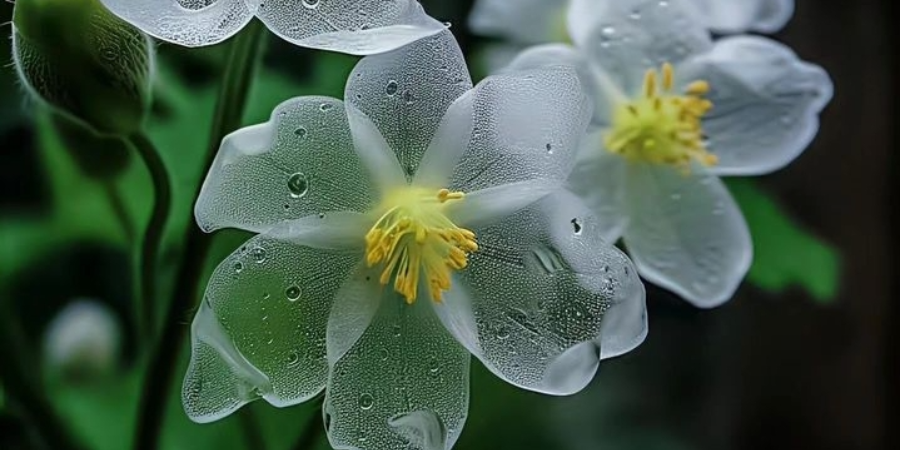

The skeleton flower, scientifically known as Diphylleia grayi, is a fascinating and unique plant that captivates with its distinctive appearance and remarkable ability to transform its petals into a translucent, skeleton-like structure when it comes into contact with water. Native to the moist, mountainous regions of Japan and China, this delicate flower has captured the attention of botanists, horticultural enthusiasts, and nature lovers around the world.
The skeleton flower derives its name from the ethereal quality of its petals, which become transparent when wet, revealing the intricate network of veins resembling a skeletal framework. In its dry state, the flower appears as a dainty, white bloom with a cluster of petals resembling those of other plants. However, when raindrops or dew touch the surface of the petals, an enchanting transformation occurs, turning the petals into translucent, ghostly structures, as if the flower has transcended the boundaries of the living world.
This extraordinary phenomenon is due to the unique cellular structure of the skeleton flower's petals. The cells in the petals contain tiny air spaces that scatter and diffuse light, giving the flowers their characteristic white appearance. When water droplets come into contact with the petals, these air spaces fill with water, causing light to pass through without scattering, resulting in the petals' translucent appearance. The effect is both breathtaking and ephemeral, as the petals gradually revert to their opaque state when they dry.
The skeleton flower's unique adaptation serves several purposes in its natural habitat. One theory suggests that the translucent petals could act as a visual signal to pollinators, attracting them with their intriguing appearance and guiding them toward the reproductive organs of the flower. Another hypothesis proposes that the transformation serves as a protective mechanism, camouflaging the flower and making it less visible to potential herbivores or predators.
Cultivating skeleton flowers can be a challenging endeavor due to their specific requirements and sensitivity to environmental conditions. They thrive in cool, moist environments with rich, well-draining soil and prefer partial shade over direct sunlight. In the wild, they are often found growing alongside streams or in shaded forest understories. Replicating these conditions in a garden setting requires careful attention to watering, soil composition, and light exposure.
Despite the challenges, skeleton flowers have gained popularity among avid gardeners and plant enthusiasts, with some specialized nurseries offering them as exotic additions to collections. Cultivating these delicate flowers can be a rewarding experience, as witnessing their remarkable transformation in person is a truly magical sight.
Beyond their aesthetic appeal, the skeleton flowers also hold cultural significance in Japan and China. In Japanese folklore, they are associated with the transient nature of beauty and the ephemeral quality of life. They are often used in traditional arts, such as ikebana (flower arrangement) or as subjects in paintings, symbolizing the fleeting beauty of nature.
Thank you for reading…….
vvjk …….


